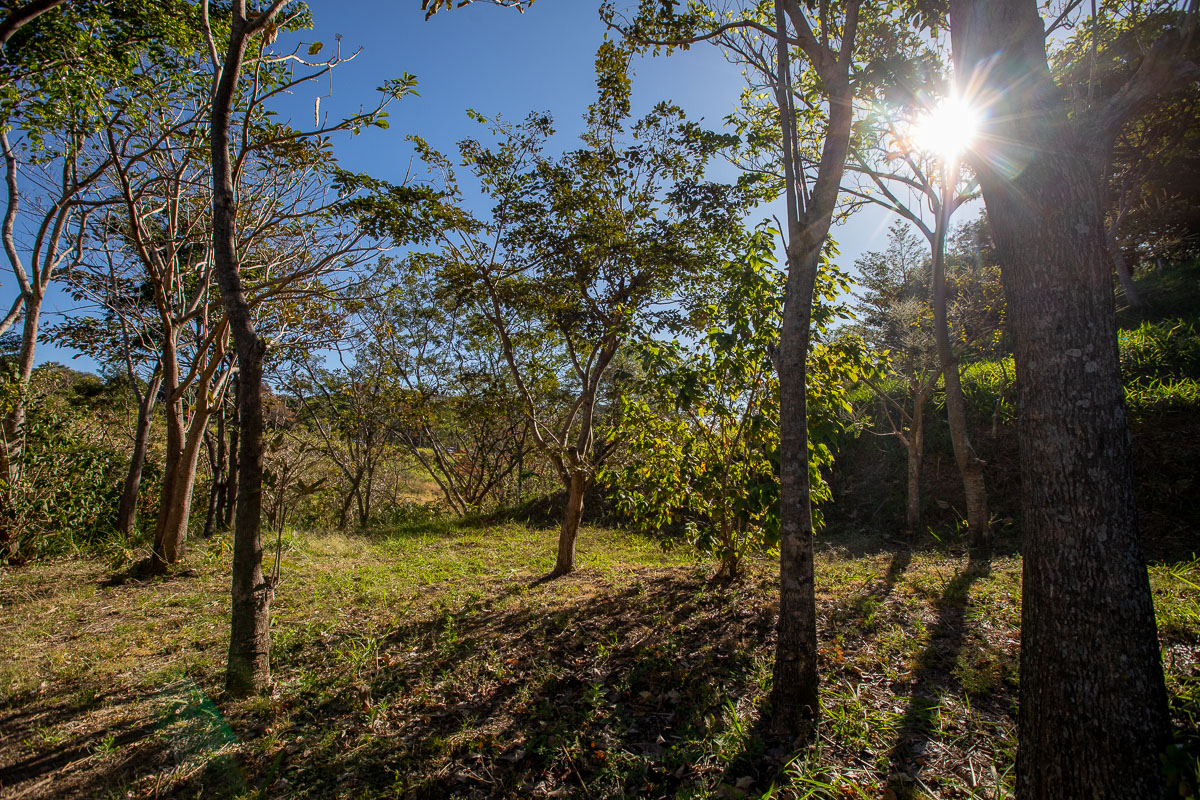You can listen to this story on Spotify
It’s Saturday morning. Children, teens, homemakers, senior citizens and other residents have gathered, all ready to work for a common goal: to reclaim this green space for their community. The diverse group hatches their plans under an awning that protects them from the sun, the kind that warms your shoulders and the spirit. Their mission is clear. This land—which at first glance seems completely abandoned—deserves a second chance, and they are here to provide it. They put on gloves because of the risks involved, and get cracking.
This piece of land on the edge of Hatillo 2, a community in southern San José, had been an open-air dump for years. Despite the fact that this damage cannot be remedied in one morning, various groups have come together to pursue the goal of conserving and rehabilitating this terrain.
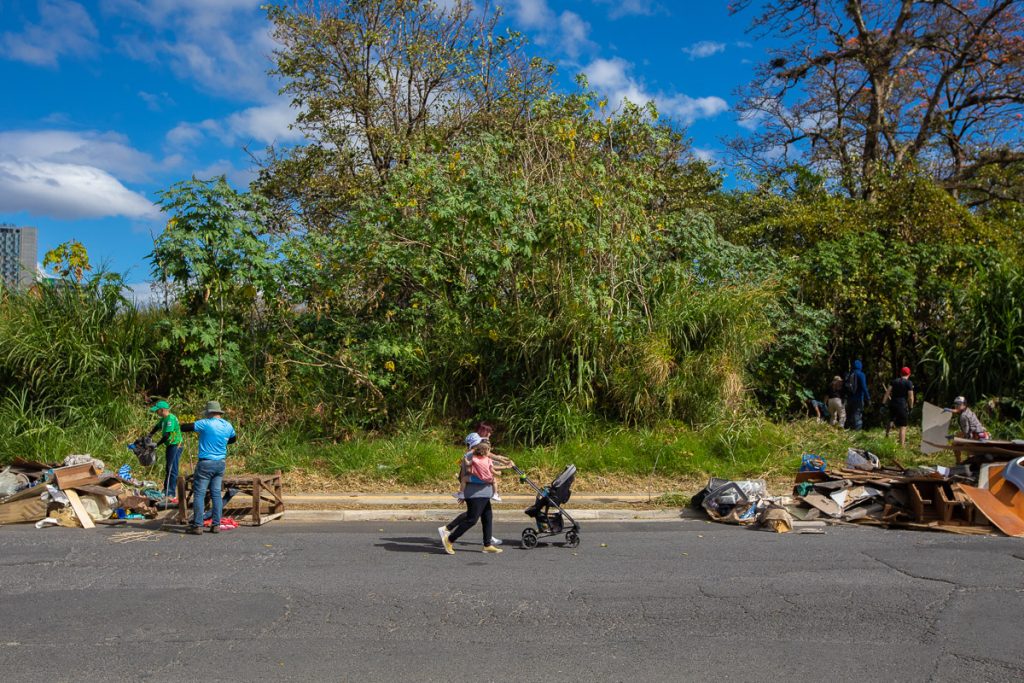
The volunteers cleaning today are not alone. They are one group of many made up of residents of other neighborhoods and various organizations around the capital, all walking a path that started years ago. Just a few meters from the houses of Hatillo 2 runs one of the most important green spaces in San José: the María Aguilar Interurban Biological Corridor, one of seven of these corridors in the Greater Metropolitan Area (GAM). The legal designation of these corridors has generated alliances like the one on display on this sunny day in Hatillo—and the process has also brought new visibility to some of the challenges facing those who seek to reverse decades of pollution.
While some volunteers start cutting the coarse plants known as “elephant grass,” others line up to pass waste hand to hand to remove it from the land. Soggy furniture, car parts, garbage bags and even construction debris are the catch of the day.
“In 10 years we want to see a trail here. We want to see this as a space for entrepreneurs, for people to ride bikes along a clean river, full of fauna,” says Guiselle Delgado, president of the Hatillo 2 Development and Improvements Associationand one of the neighbors who’s been working on this space for several years.
Strength in numbers
Dozens of organizations have joined efforts to rescue one of the country’’s most important river basins. The María Aguilar Interurban Biological Corridor, constituted by the green space along the 21-kilometer María Aguilar River, is one of the most important biological spaces in the cantons of La Unión, Curridabat, Montes de Oca, San José and Alajuelita.
Since 2016, Costa Rica has had three categories of biological corridors; in total, according to evaluations of the corridors, 38% of our land mass is protected within CBIs. The three categories are the Biological Corridors, the Marine-Coastal Biological Corridors, and the Interurban Biological Corridors (CBIs). In this last category, there are seven CBIs. What began as a project for the Torres River has now been replicated in the CBI Achiota and García Muñóz in Alajuela; the CBI Tiribí and María Aguilar in San José (neighbors of the CBI Río Torres); the CBI Pará Toyopán in Heredia; and the CBI Cobrisurac in Cartago, all of them developed in the last five years.
These spaces are managed through the Interurban Biological Corridors Program, part of the Biological Corridors Program at the Ministry of Environment and Energy (MINAE). However, the project emerged from the union between the public sector and citizens at large.
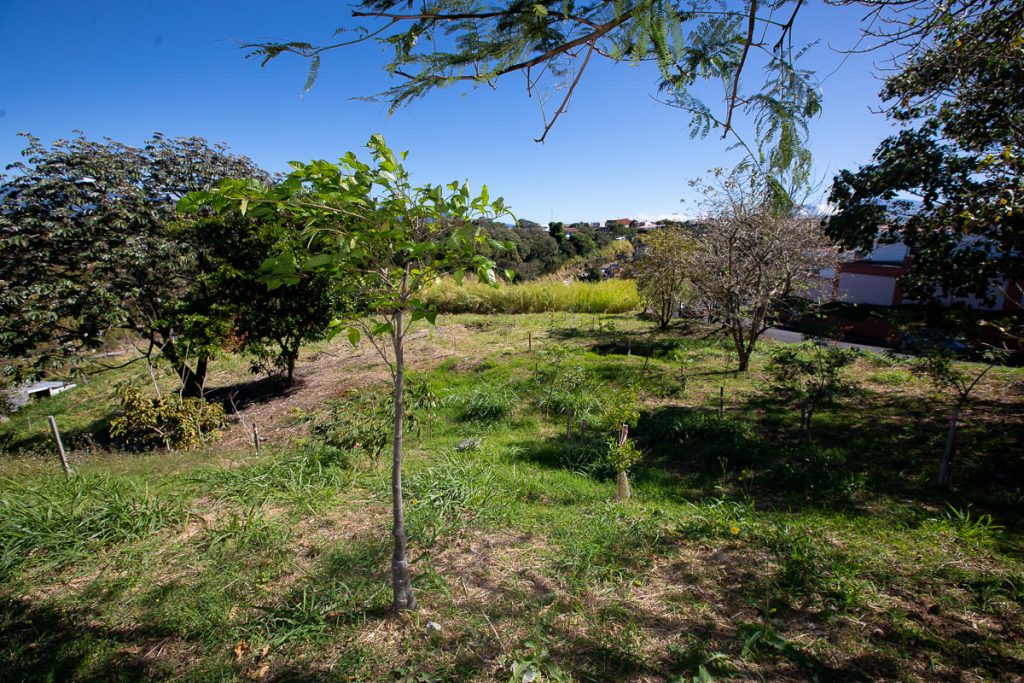
Before Decree No. 40443, which gave legal life to the Interurban Biological Corridors Program in 2016, biological corridors were considered territories that connected protected areas, such as national parks or biological reserves. The legal figure didn’t apply to cities, where interconnected green spaces do not connect protected areas.
Members of various public institutions, such as Acueductos y Alcantarillados (AYA) and National Center for Power and Light (CNFL); local government workers, such as municipal employees; civil society representatives; and other interested citizens starting meeting to rethink new solutions for ecosystem problems. The idea emerged to protect the green spaces of the cities, taking the Torres River as a starting point. They began to see the potential and the need for legal protection for urban corridors.
“We were a group of friends from different institutions who said, why don’t we do something for the city?” says Gabriela Sánchez, one of the leading voices for the creation of the CBI, and now the administrator of the CBI Río Torres. “It took us three years. Starting in 2012, we developed a profile to establish the Interurban Biological Corridors.”
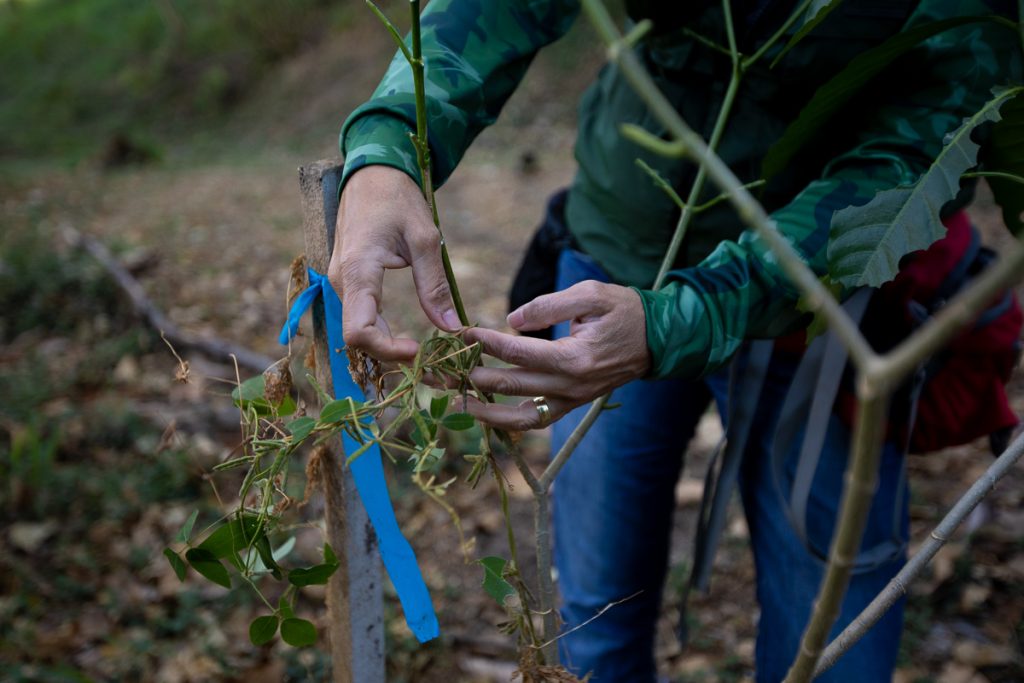
The work was not easy. Gabriela recounts that she and the other supporters of the Interurban Corridors found, at the beginning, “little openness from some officials, mainly from MINAE, to think of the city as a green space that offers us ecosystem services…. We went to a lot of places to present the CBI, with the result that now, we do have a green cities strategy. The [Interurban] Biological Corridors represent the backbone of the green cities that we want to build.” (A green city is made up of a many green spaces, both large and small: groves, green areas, parks, sidewalks lined with trees and shrubs. All these territories are called trama verde.)
Thanks to the efforts of Gabriela and the other officials, the Strategic Plan for National Biological Corridors now includes the category of Interurban Biological Corridors to “promote the conservation and sustainable use of biodiversity in Costa Rica from a perspective of functional and structural ecosystem connectivity.” The first basin that was able to start working was the Torres River, which runs through the cantons of Goicoechea, Montes de Oca, Tibás and San José. Thanks to the successes achieved with this river, it has become the parent project of the now seven CBIs that bring together various communities of the Greater Metropolitan Area, as well as two more that are in the approval process.
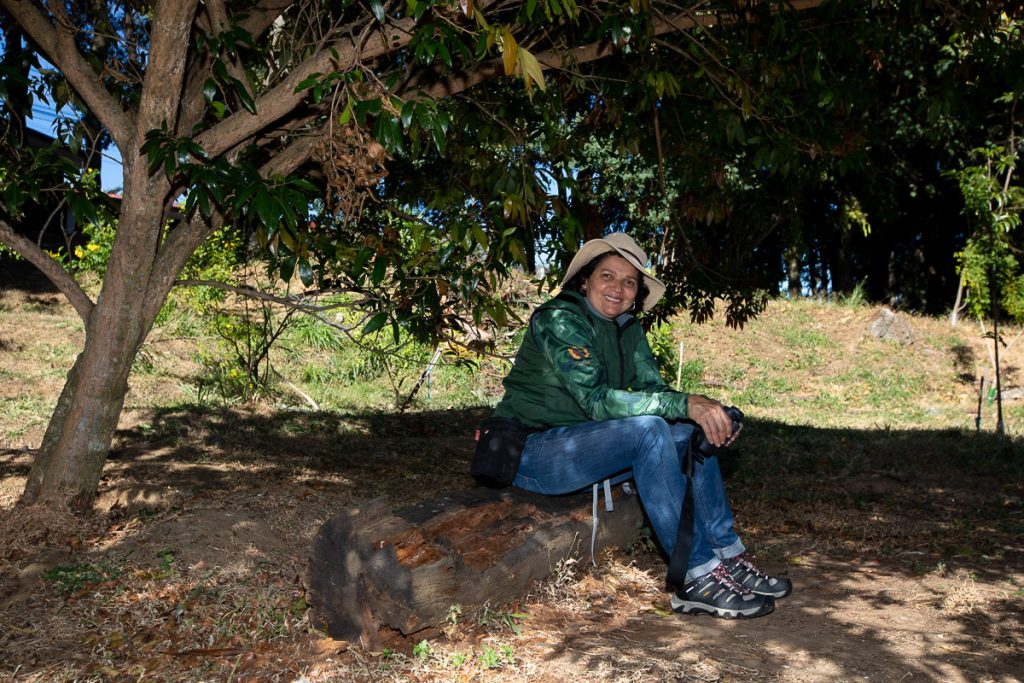
The potential impact of this change is multifaceted, say supporters of the program. The CBIs seek to “increase green areas, allowing flora and fauna species that inhabit cities or live near them to transit, obtain habitat, food, and shelter,” writes Sabrina Geppert of the German Development Organization (GIZ) who works with the National System of Conservation Areas (SINAC). But the corridors also have the potential to affect people who live near these spaces, she adds, since “the inhabitants of cities benefit from the improvement in the environmental conditions of their territories, and obtain a better quality of life.”
The effort to recover green spaces was reinforced in 2020 with a policy that strengthened inter-institutional work to rehabilitate riverbeds: the National Protection Areas Policy 2020-2040 provided a strategic framework to replant the areas surrounding the rivers with trees.
The policy gives urban rivers a protection area of 10 horizontal meters on both sides of the river bank. However, construction and illegal settlements have slowed the process of recovering this terrain.
A community effort
Although the initiative was officially launched by the Ministry of Environment and Energy, the multi-sector nature of conserving the CBI made it necessary to create local committees. These groups bring together local actors from the private and public sectors to coordinate the recovery of the target areas.
Because of this structure, many current efforts to protect the corridors have emerged from grassroots and volunteer initiatives. Each neighborhood through which the CBIs travel has unique characteristics; this means that creating a committee of local stakeholders is essential.
“These are people who meet voluntarily, very significant players—from the University of Costa Rica, a municipality, even an NGO or community group. We are all stakeholders, interested in improving a micro-watershed,” says Gabriela. She is now helping develop the youngest CBI: the Tiribí, which also runs through Hatillo.
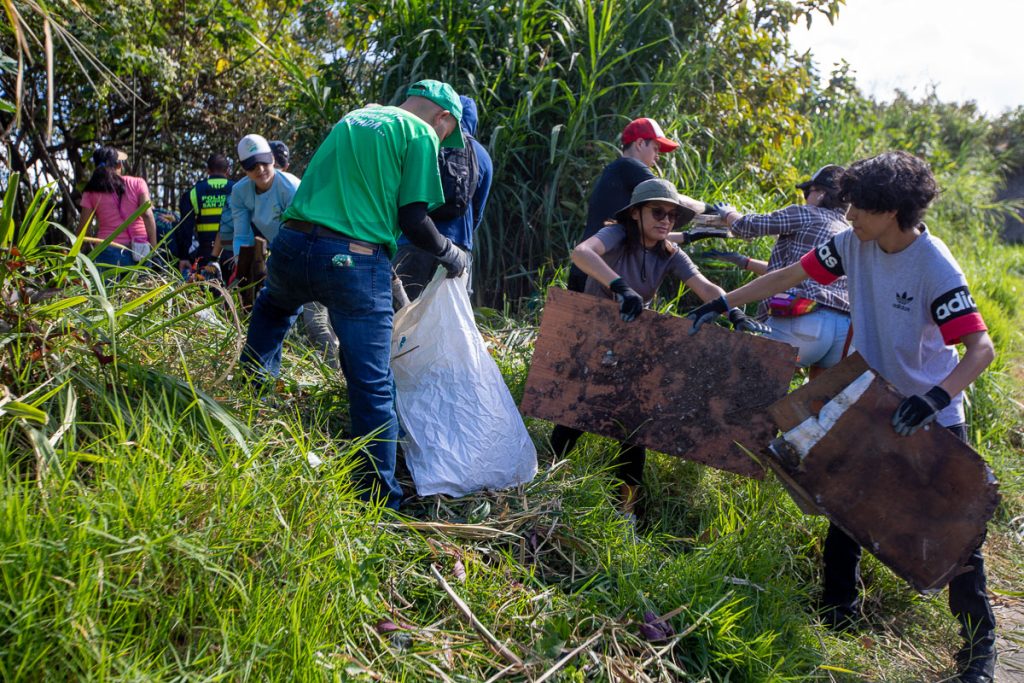
On this Saturday, approximately 30 volunteers have met in Hatillo to take care of the corridor, a green and blue space that the residents want to recover.
“Sometimes people pass by and see a simple vacant lot, but when you really get in here, you realize the beautiful things it holds. The views, the birds, nature—you come to respect them. This green area is very important to us,” says Melissa Monge, who works with Sociocultural Promoters of Hatillo, . She talks to me as she takes a breather before continuing to clear trash.
“Sometimes people think that ‘sociocultural’ applies only to cultural things, but in reality it covers a whole range of sectors: social, cultural, recreational, environmental, and health.”
As a resident of the area, Melissa says that “Hatillo already has lots of buildings and houses. We need to make sure we protect the green.”
Ariel Sandí, president of the Hatillo Verde Association, is motivated by a similar sentiment. For three years, this group of residents and associations has been recovering green territory in the city. Only last year, they managed more than a dozen recovery processes of green spaces at a regional, sectoral and local level in the eight sectors of Hatillo.
“We have been working on the interurban corridors: trees have been planted, garbage has been collected,” says Ariel, who also participated in the organization of today’s cleaning. “In the future, we hope to see large, strong trees, and pleasant spaces where people can enjoy recreation. We hope to have a place where they can come and have fun, and see years of effort on display.”

Ariel says that Hatillo Verde is very aware of the social problems of the district, a crowded area for which hopes for ecological health are closely tied to the nearby biological corridors.
“For us, it’s about recovering a vital space for the community, to be able to have spaces for recreation, to keep kids away from drug addiction,” states Ariel with a chapeadora in hand, ready to cut elephant grass. That’s what matters to us and what we try to make the community see.”
Laura Kinderson, an officer of the San José Municipal Police, says she has faith that the work she is doing also allows for a safer Hatillo. I chat with her while she moves a wheelbarrow loaded with garbage bags.
“We know that security is not just about catching thieves. There is also situational security: a place that’s neglected represents a danger for passersby, students, the community itself,” says Laura. “We’re doing what we can to collaborate with cleaning and waste collection alongside the municipality of San José.”
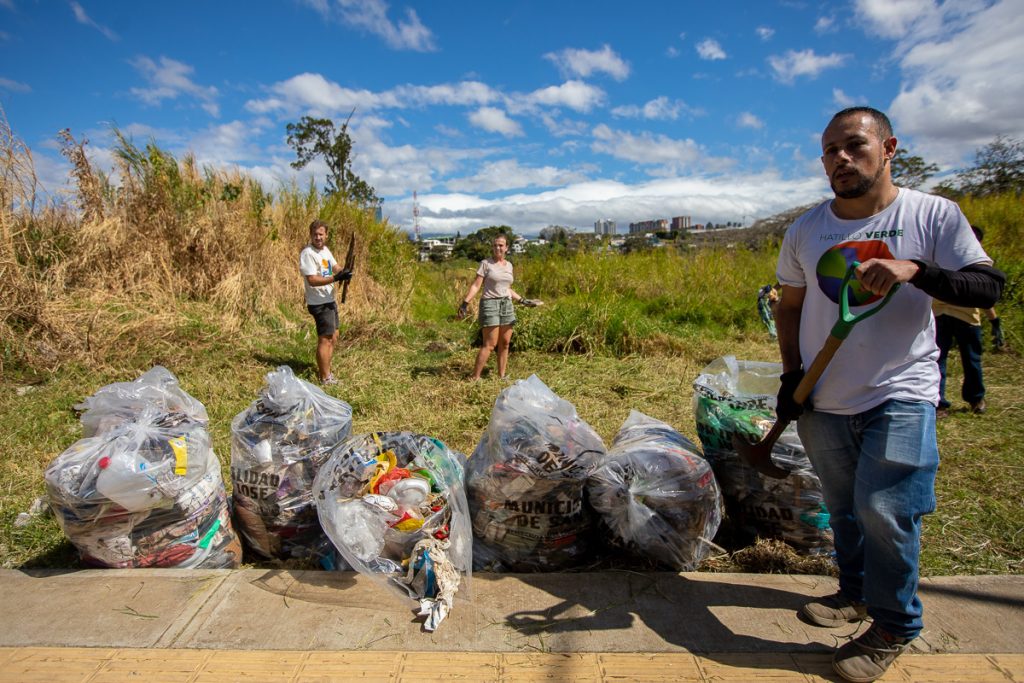
The work has not only been local, despite the fact that the residents were the first to be concerned. Through alliances and teamwork, as well as networking and publicity, one of the largest environmental groups in the country reached the banks of the María Aguilar today. Elian Villalobos, founder of GreenWolf, heard about the impact volunteers have made throughout the years because, despite living nearby, he has worked hard on the CBI projects and in the reforestation of Hatillo.
According to Elian, the place being cleaned today was once “practically an open-air dump. That was corrected. Thanks to joint efforts between citizens and local government, today they have a sidewalk and a totally different demarcation. The amount of waste is totally workable—of course, there shouldn’t be waste at all, but it is due to a lot of poverty, and it is no longer what existed before. The people here have shown their understanding of this through the clarity they’ve brought to their work with the Municipality of San José.”
Recently this work reached the ears of Algo por la Tierra (Something for the Earth), an NGO focused on environmental cleanups. Johanna Jerez, vice president and founder, says that they work hand-in-hand with the older brother of the CBI María Aguilar, the CBI Río Torres. Their work is concentrated in Montes de Oca, but when they found out about this initiative for the María Aguilar River, they wanted to lend their support to the cause.
“[The work with] the Interurban Corridors is part of recovering these areas,” says Johana, who proudly notes that Algo por la Tierra is celebrating its fifth anniversary. “Working with the communities within these corridors, and all along these rivers that pass through the Greater Metropolitan Area, has caused a significant impact. They say that it is a palliative action, but it is an action of the utmost importance, because [all the trash] we manage to get will not go further.”
The fight for a healthy and ecologically balanced environment, as well as the recovery and appropriation of green lands, is a huge effort. What results have been observed throughout these years of work?
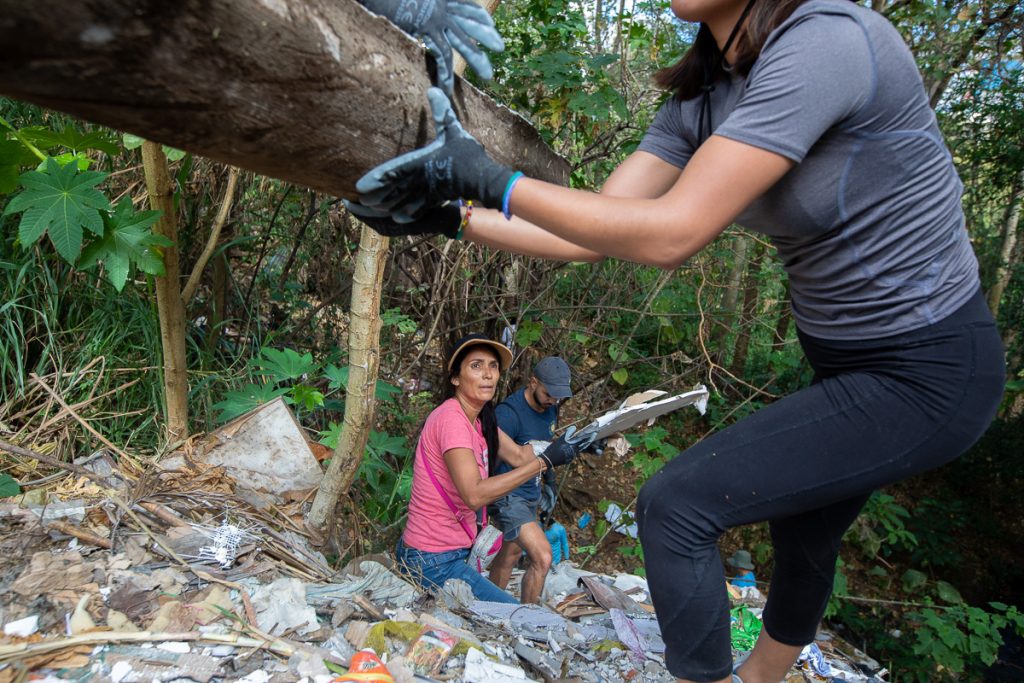
Green and blue in the middle of the urban gray
Has the Interurban Biological Corridors Program achieved an impact? CBI Program Manager Jairo Sancho offers a resounding “yes.” In 2021, he wrote that the CBIs are achieving an environmental and social impact that leaves a mark on governance, citizenship, and education.
First, the program has developed policies, guidelines and instruments of urban municipal planning for the rehabilitation of corridors. As of October 2022, 15 municipalities in the GAM have already adopted these policies and are part of the Green City program known in English as Biodiver_City.
One of them, the Municipality of San José, has developed various projects and social work areas in order to achieve this green city. These municipal projects revolve around the principles of integration, citizen participation and exchange of experiences, where training groups, work areas and recovery campaigns are developed through alliances between institutions and citizens. All of this governance work has been empowered by the CBIs, Jairo says.
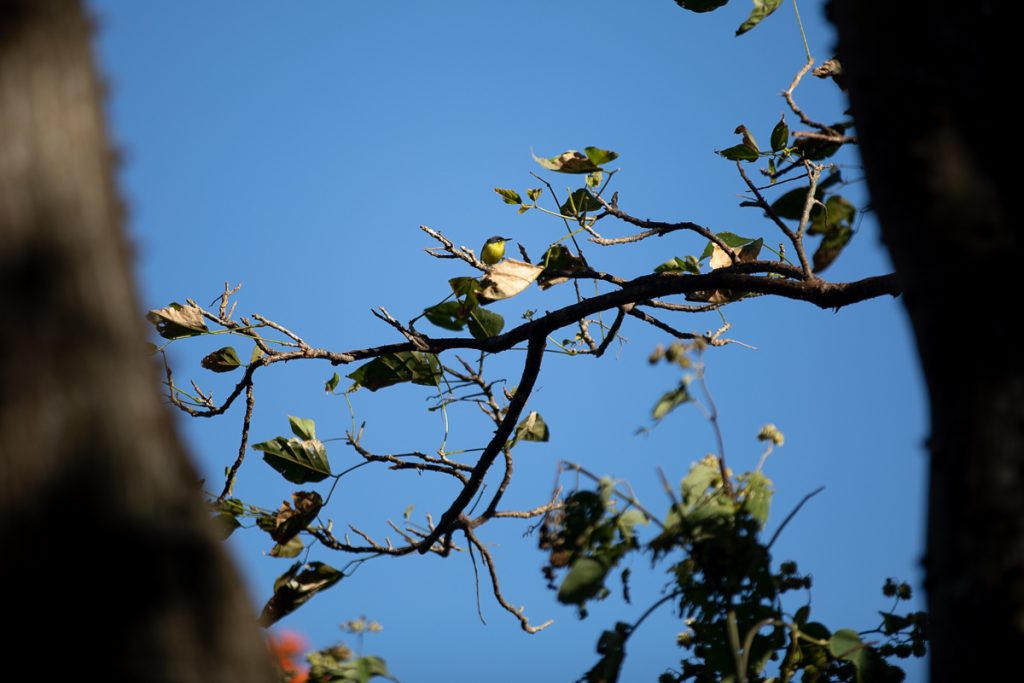
The Biodiver_City Program has also developed various resources for local governments such as Solutions Based on Nature (SBN), a guide with specific actions to help build ecologically balanced cities.
The corridors have also been bridges for work through alliances, such as the work carried out through the “María Aguilar Pact”, a partnership between the CBI María Aguilar and the United Nations Development Program. One of the primary goals of this initiative is to “increase and improve the city’s green space by at least 100 hectares.”
The Program has also registered a positive impact on biodiversity. The institutional work to rehabilitate the protected areas of the Torres River has achieved the recovery of six hectares in various areas of the basin, where more than 1,770 trees of more than 60 different species have been planted, according to biologist Danny Valle from the Municipality of San José.
The work to improve the biodiversity of the flora in these sectors has allowed the reappearance of native fauna of the area, providing motivation to continue the work. According to the work observed by Hatillo Verde, species such as woodpeckers, herons, orioles and hawks are some of the birds members of the organization have observed during cleaning and recovery days, in addition to the melozone cabanisi, known as the comemaíz (corn-eater), a species endemic to Costa Rica.
Hatillo Verde, together with the Productive Landscapes project, has taken this observation of flora and fauna and has turned it into education. They have created various murals in various parts of the city to teach people about the biological value that runs through their cities.
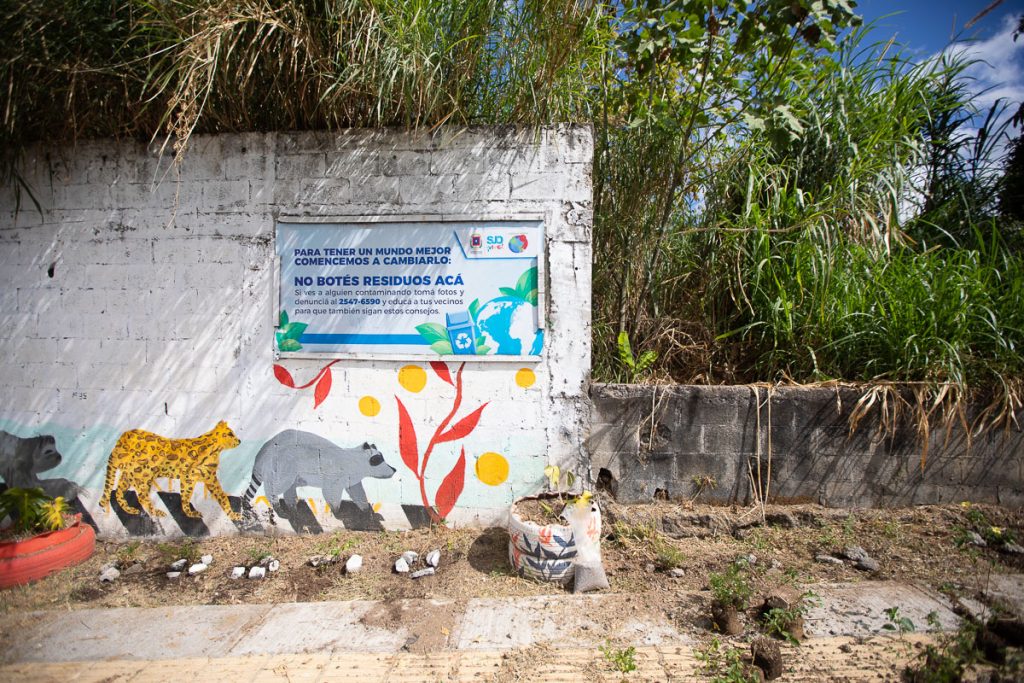
Work in the present to shine in the future
Although the limitations faced by the Interurban Corridors are many, those involved say that increased and better coordinated citizen participation is a clear impact of the Corridors Program, and one that could grow over time.
“If we had done a campaign many years ago, few people would have showed up. Little by little, people are becoming interested. They see what they have in the community, and they’re interested in joining in,” says Melissa, who has seen Hatillo’s residents become increasingly involved in reclaiming their space.
“That’s the most important apsect of this type of campaign,” says Elian. “It shows us which are the essential aspects of life, which are the aspects that as citizens we must begin to work on together. That joint work begins to take place.”
However, much work remains to be done.
Gabriela says that it is necessary “for the CBI to become a part of municipal planning and the work to organize each municipality.”
The work also needs more funding. The program of Interurban Biological Corridors has estimated a total budget of $1,000,000 for the proper management of the Río Torres and Maria Aguilar Corridors, but national alliances and international funding has provided only 70% of that total. With limited budgets, the program hasn’t been able to carry out research and biological monitoring that would document the impact of the program. So far, it has only been measurable through anecdotes from volunteers.
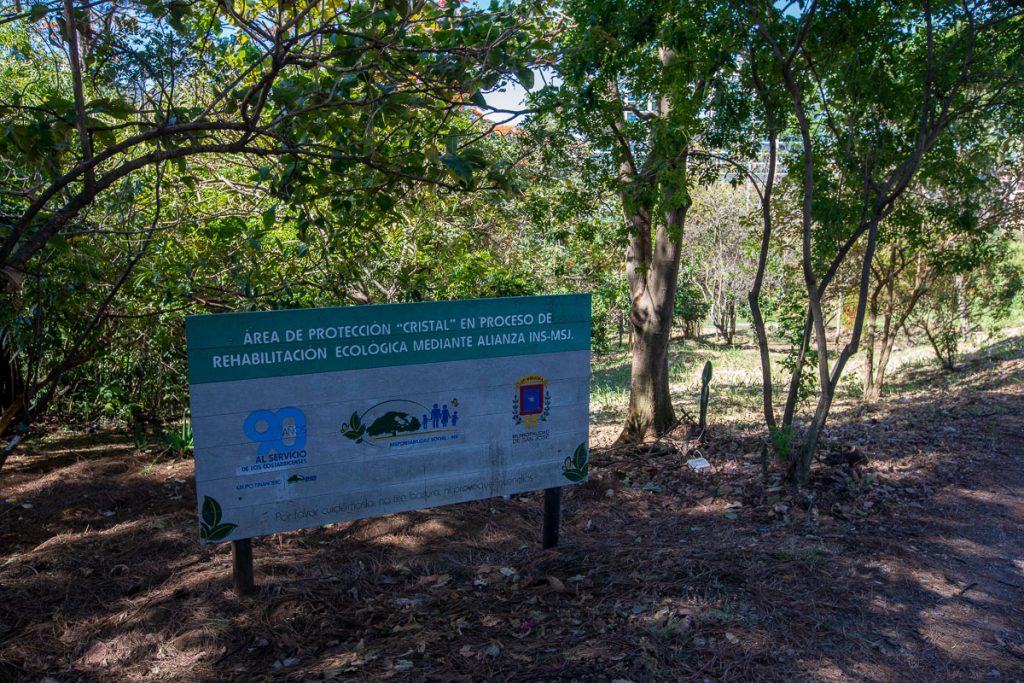
Another challenge is that the urban rivers of Costa Rica, literally and figuratively, run through the center of some of the country’s thorniest housing problems. Since legal development is not possible in a protected area, or on steep areas near the riverbank that’s unsuitable for construction, rivers are a magnet for illegal and unsafe structures. According to the Nacional Policy for Protection Areas 2020, , 5.05% of the protected areas along the GAM’s primary rivers have been invaded by constructions and buildings.
“The country is increasingly polarized, so there are people getting richer and people getting poorer,” Gabriela says as she discusses riverside settlements. “Whenever you don’t have enough for rent, you’d rather eat.”
When the improvement of the corridors involves housing issues, even more diverse public entities enter the picture, and it is difficult to coordinate.
“Unfortunately, at the national level, there is no clear policy,” says Gabriela. “There are several institutions that must address this. The Municipality of San José managed it on part of the María Aguilar, but there are no clear guidelines.”
The policy on protected areas is clear about its limitations. The document recognizes that there is insufficient coordination between the National System of Conservation Areas (SINAC), the National Institute of Housing and Urbanism (INVU), and municipalities when it comes to zoning. It also recognizes a lack of a strategy to protect these green spaces.
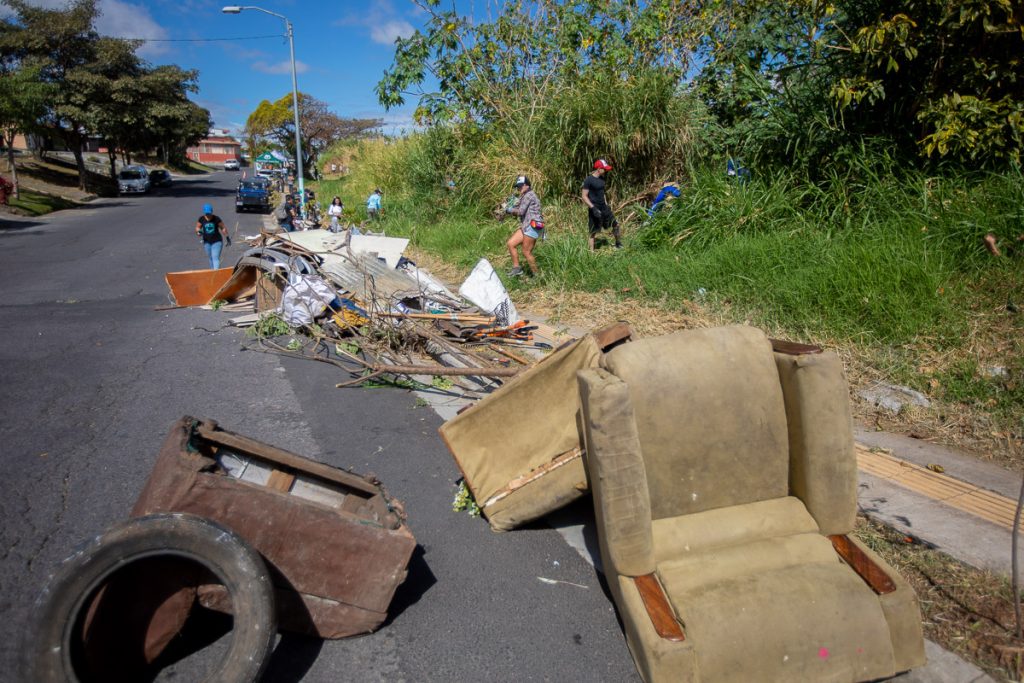
From the local perspective, despite the fact that community projects have grown over time, citizens’ rapport with the project has not been constant. In the words of Karina Rodriguez, “In many neighborhoods, our people live in overcrowded areas, and there are no green spaces for people to enjoy. These spaces are very important, but up to now, people know no other reality than being overcrowded.”
The pace of work slows as the morning comes to an end. The job is done, and while it is a palliative measure, participants say it’s part of a cultural shift that can only be accomplished one step at a time.
Karina says that the work on display here is not about one weekend, 30 neighbors, or one municipality. It is the work, she says, of “people who have dreams and hope. This means that the entities with decision-making power to listen to us—to understand that our communities need more green spaces. Clean spaces.”
Along with the other volunteers, she heads home until the next cleanup, hoping that her efforts—along with those of other groups along the capital’s rivers—will make a big impact on the Interurban Biological Corridors, green veins in this concrete city.
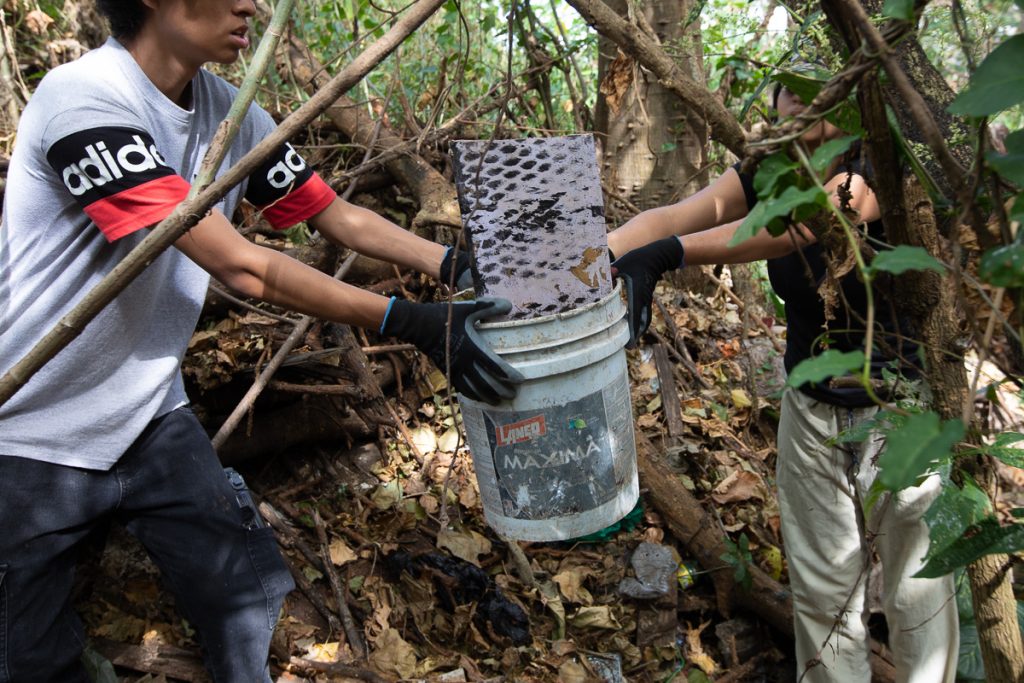
This story was developed and published through a partnership between El Colectivo 506, Land Portal and PopNews. The initiative, organized by PopNews, an organization dedicated to sharing outstanding solutions journalism, invited journalism students to submit proposals for stories to be edited and published at El Colectivo 506. This particular story is part of Nieves Zúñiga’s project for the 2022 LEDE Fellowship, a program of the Solutions Journalism Network, and in collaboration with Land Portal.


